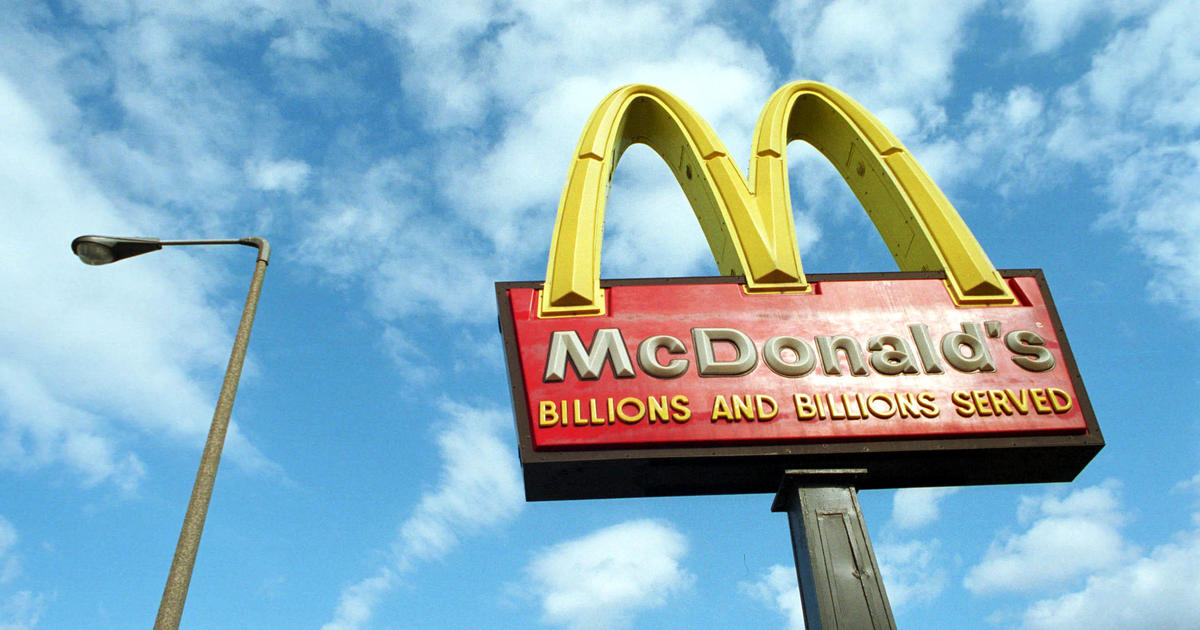California
California restaurant used fake priest to get workers to confess

A restaurant chain in California enlisted a fake priest to take confession from workers, with the supposed father urging them to “get the sins out” by telling him if they’d been late for work or had stolen from their employer, according to the U.S. Department of Labor.
The restaurant owner, Che Garibaldi, operates two Taqueria Garibaldi restaurants in Sacramento and one in Roseville, according to a statement from the Labor Department. Attorneys for the restaurant company didn’t immediately respond to a request for comment.
The alleged priest also asked workers if they harbored “bad intentions” toward their employer or if they’d done anything to harm the company, said the agency, which called it one of the “most shameless” scams that labor regulator had ever seen. The Diocese of Sacramento also investigated the issue and said it “found no evidence of connection” between the alleged priest and its jurisdiction, according to the Catholic News Agency.
“While we don’t know who the person in question was, we are completely confident he was not a priest of the Diocese of Sacramento,” Bryan J. Visitacion, director of media and communications for the Diocese of Sacramento, told the news agency.
“Unlike normal confessions”
Hiring an allegedly fake priest to solicit confessions wasn’t the restaurant chain’s only wrongdoing, according to government officials. A court last month ordered Che Garibaldi’s owners to pay $140,000 in back wages and damages to 35 employees.
The restaurant chain’s owner allegedly brought in the fake priest after the Labor Department started investigating workplace issues. According to the Labor Department, its investigation found that the company had denied overtime pay to workers, paid managers from money customers had left as employee tips, and threatened workers with retaliation and “adverse immigration consequences” for working with the agency, according to the agency.
The Labor Department said an investigator learned from some workers that the restaurant owner brought in the priest, who said he was a friend of the owner’s and asked questions about whether they had harmed the chain or its owner.
In court documents, a server at the restaurant, Maria Parra, testified that she found her conversation with the alleged priest “unlike normal confessions,” where she would talk about what she wanted to confess, according to a court document reviewed by CBS MoneyWatch. Instead, the priest told her that he would ask questions “to get the sins out of me.”
“He asked if I had ever got pulled over for speeding, if I drank alcohol or if I had stolen anything,” she said. “The priest asked if I had stolen anything at work, if I was late to my employment, if I did anything to harm my employer and if I had any bad intentions toward my employment.”
The Labor Department also alleged that the employer sought to retaliate against workers and silence them, as well as obstruct an investigation and prevent the employees from receiving unpaid wages.

California
California Roots Threaten JuJu Watkins’ NCAA Road to Rivaling Caitlin Clark

Ever since Caitlin Clark left the NCAA to set records in the WNBA, the hunt for the next generational basketball talent has intensified. Among the emerging stars, JuJu Watkins stands out with her electrifying performances for USC and record-breaking milestones. But while her game dazzles on the court, her California roots and unique circumstances create hurdles that may hinder her quest to rival Clark’s legendary NCAA career.
On the latest episode of Fearless with Jason Whitlock, Whitlock tackled the issue, highlighting the contrasting environments between Clark’s Iowa and Watkins’ Los Angeles.
“Well, Caitlin Clark was in Iowa in the middle of nowhere. She wasn’t in the entertainment capital of the world. She wasn’t in a city that had 75-degree weather year-round and open beaches. She went off or she grew up in and continued to play in a little isolated area of the country where people are starved for entertainment. And so she built a huge following right there in the state of Iowa, her home state,” he said.
ADVERTISEMENT
Article continues below this ad
The deeper issue, according to Whitlock, is the cultural and entertainment saturation of Los Angeles, where sports often compete with numerous distractions for attention. In contrast, Clark thrived in a basketball-centric environment, with little competition for local and statewide support. While Watkins’ environment may pose unique challenges, her talent remains undeniable.
She recently made history as the fastest Power Five player in women’s college basketball to reach 1,000 career points, accomplishing the feat in just 38 games—two fewer than Clark’s record. With season averages of 24.8 points, 5.8 rebounds, and 3.8 assists on 46.2% shooting, Watkins is unquestionably a dominant force. Yet, as Jason Whitlock put it, the question persists: Can she cultivate the same level of national adoration that Clark commanded?
Balancing brilliance: Can JuJu Watkins thrive amid criticism and California’s spotlight?
ADVERTISEMENT
Article continues below this ad
Adding to the debate, Rachel DeMita voiced concerns over how USC is managing Watkins’ playing time on her own podcast. “I don’t think that’s what JuJu needs for the development of her game,” DeMita said, suggesting that keeping Watkins on the court for extended minutes might be more about stat-padding than fostering her growth as a player.
via Imago
Dec 21, 2024; Hartford, Connecticut, USA; USC Trojans guard JuJu Watkins (12) drives the ball agains UConn Huskies guard Paige Bueckers (5) and guard Kaitlyn Chen (20) in the second half at XL Center. Mandatory Credit: David Butler II-Imagn Images
Such a strategy could also increase her risk of injury, a significant concern given Watkins’ pivotal role for USC.
ADVERTISEMENT
Article continues below this ad
Despite these challenges, Watkins has demonstrated resilience and poise. Her performance this season reflects her ability to adapt and excel under pressure. However, her journey to rival Caitlin Clark’s legacy will require more than individual brilliance. Watkins must navigate the complexities of playing in a city where attention is fragmented, balancing her development with the need to draw a larger following.
Whether she can carve out her own path and emerge as a player of Clark’s stature remains uncertain. For now, her record-breaking performances and undeniable talent keep her firmly in the conversation, as the basketball world watches to see if she can overcome the challenges of her California roots and fulfill her potential as the next NCAA superstar.
California
Lights back on after power outage in parts of Southern California

Watch CBS News
Be the first to know
Get browser notifications for breaking news, live events, and exclusive reporting.
California
How California’s high-speed rail line will advance in 2025

California’s high-speed rail project, which aims to connect San Francisco and Los Angeles with a 494-mile route capable of speeds up to 220 mph, aims to continue construction in 2025.
Phase 1 of the project focuses on linking San Francisco in the north to Anaheim via Los Angeles in the south, with plans to extend the line north to Sacramento and south to San Diego in Phase 2.
The California High-Speed Rail Authority, which is overseeing the project says it has already generated significant economic benefits, including creating over 14,000 construction jobs and involving 875 small businesses.
But despite its transformative goals, the project remains politically contentious, with critics questioning its costs and viability. It has been in development since voters approved funding in 2008 and has faced delays, cost increases, and shifting timelines.
Photo Illustration by Newsweek
Work Planned for 2025
In a statement to Newsweek, the California High-Speed Rail Authority outlined its planned work for 2025, which focuses on continuing construction in the Central Valley between Merced and Bakersfield.
The 171-mile segment between Merced and Bakersfield will be the first part of the line to be operational, with services expected to start between 2030 and 2033. Of that section, 119 miles are currently under construction.
Of the planned structures in the Central Valley section, 85 are underway or completed out a total of 93 on the segment. Work will continue on these structures as well as on the tracks capable of handling high-speed trains.
By the end of 2025, civil construction on the 119-mile segment currently underway is expected to be completed and construction will begin on the next stretches to Merced and Bakersfield.
In 2025, the authority also plans to advance design and begin construction on its stations in the Central Valley. It also expects to select a manufacturer for the trains.
Although the initial operating segment will only run 171 miles from Merced to Bakersfield, environmental clearances have been obtained for 463 miles of the 494-mile Phase 1 route, completing the stretch between San Francisco and Los Angeles. Only the Los Angeles-to-Anaheim section is still awaiting approval.

California High Speed Rail Authority
The Authority said it plans to publish its draft environmental impact report for the Los Angeles-to-Anaheim section in 2025, a key milestone for the eventual full-approval of Phase 1.
More than $11 billion has been invested to date, with funding sources including state bonds, federal grants, and proceeds from California’s carbon emission trading auctions.
The authority has not yet received funding to construct the segments westwards from the Central Valley to the Bay Area or southwards to Los Angeles.
Despite this, the authority said it was committed to pushing on.
“California is the first in the nation to build a true high-speed rail system with speeds capable of reaching 220 mph,” the Authority told Newsweek. “The Authority remains committed and aggressive in moving this historic project forward while actively pursuing additional funding.”
Political Opposition to the Project
Despite ongoing progress, the high-speed rail project continues to face political opposition, particularly from Republican leaders.
While President Joe Biden’s administration has invested billions in it since 2021, the incoming Republican administration, which will control the House of Representatives, the Senate, and the presidency, is unlikely to continue funding it at the same level.
Representative Sam Graves of Missouri, who chairs the House Transportation and Infrastructure Committee, has criticized the project’s costs and funding strategies.
In a statement to Newsweek, Graves described the rail line as a “highly troubled project” and raised concerns about its reliance on government subsidies.

California High Speed Rail Authority
He pointed out that the current funding supports only a limited segment between Merced and Bakersfield, which he estimated will cost $35 billion.
“Full cost estimates [for Phase 1, between San Francisco and Anaheim] now exceed $100 billion and growing,” Graves said, calling for a comprehensive review of the project before any additional funding is allocated.
“California high-speed rail must have a plan and prove that it can wisely and responsibly spend government money—something it’s failed to do so far.”
The congressman stated that over the next four years, he would oppose any further federal funding for the California high-speed rail project.
Instead, Graves advocated for efforts to redirect unspent funds and focus on improving existing transportation infrastructure, such as Amtrak.
Graves also emphasized the need for private-sector involvement in future rail projects, citing Brightline’s operations in Florida and Las Vegas as a successful example of private investment.
While Graves acknowledged the potential of high-speed rail, he argued that the California project has failed to meet the necessary criteria for viability and local demand.
The authority told Newsweek it would engage with the federal government to seek other funding sources.
“We continue to explore strategies aimed at stabilizing funding, potentially allowing the program to draw private financing and/or government loans,” it said.
-
/cdn.vox-cdn.com/uploads/chorus_asset/file/24924653/236780_Google_AntiTrust_Trial_Custom_Art_CVirginia__0003_1.png)
/cdn.vox-cdn.com/uploads/chorus_asset/file/24924653/236780_Google_AntiTrust_Trial_Custom_Art_CVirginia__0003_1.png) Technology5 days ago
Technology5 days agoGoogle’s counteroffer to the government trying to break it up is unbundling Android apps
-

 News6 days ago
News6 days agoNovo Nordisk shares tumble as weight-loss drug trial data disappoints
-

 Politics6 days ago
Politics6 days agoIllegal immigrant sexually abused child in the U.S. after being removed from the country five times
-

 Entertainment7 days ago
Entertainment7 days ago'It's a little holiday gift': Inside the Weeknd's free Santa Monica show for his biggest fans
-

 Lifestyle6 days ago
Lifestyle6 days agoThink you can't dance? Get up and try these tips in our comic. We dare you!
-

 Technology1 week ago
Technology1 week agoFox News AI Newsletter: OpenAI responds to Elon Musk's lawsuit
-
/cdn.vox-cdn.com/uploads/chorus_asset/file/25672934/Metaphor_Key_Art_Horizontal.png)
/cdn.vox-cdn.com/uploads/chorus_asset/file/25672934/Metaphor_Key_Art_Horizontal.png) Technology2 days ago
Technology2 days agoThere’s a reason Metaphor: ReFantanzio’s battle music sounds as cool as it does
-

 News3 days ago
News3 days agoFrance’s new premier selects Eric Lombard as finance minister




/cdn.vox-cdn.com/uploads/chorus_asset/file/25742882/DSC_1384_Enhanced_NR.jpg)










